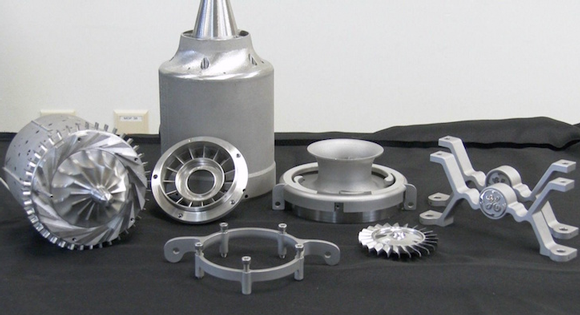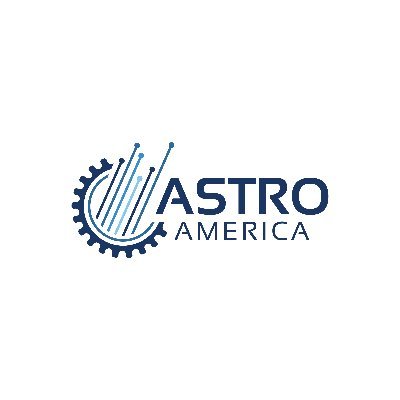The Applied Science & Technology Research Organization of America (ASTRO America) has partnered with three major aerospace manufacturers Pratt & Whitney, Honeywell, and GE to simplify the onboarding process for small 3D printing vendors.
Supported by the Office of the Under Secretary of Defense, Research and Engineering (OUSD(R&E)), and executed through America Makes, this initiative aims to establish a common additive manufacturing (AM) qualification template. Currently, aerospace manufacturers use distinct processes for onboarding suppliers, ensuring production criteria. ASTRO America aims to standardize the qualification process, reducing complexity for small businesses dealing with varied processes based on specific engine company-customer relationships.
“We are excited to work with GE, Honeywell, and Pratt & Whitney to develop a set of common qualification requirements for AM suppliers that can lessen the burden on suppliers and pave the way towards greater adoption of AM technologies,” said Bill Tredway, ASTRO America’s Senior Manufacturing Fellow and Principal Investigator for the CAM-QT project. “Small and medium size AM suppliers should be able to take advantage of a Common Qualification Template. The ripple effect will benefit the entire defense manufacturing supply chain.”

Streamlining AM qualification for small businesses
The widespread adoption of AM machines and materials faces a significant hurdle in the qualification process. Small and medium-sized businesses are required to invest substantial resources and time, engaging in controlled processes, testing, and data analysis. Even when employing the same manufacturing process, vendors encounter the challenge of furnishing distinct data to each Original Equipment Manufacturer (OEM).
ASTRO America tackled these challenges by securing an award from OUSD(R&E) through America Makes aiming to establish universal Installation Qualification (IQ) and Operational Qualification (OQ) requirements for in-service metal AM parts. These requirements are intended to be accepted by the design authorities of three engine OEMs as part of their individual qualification and certification efforts.
“Metal 3D printing is becoming an essential part of manufacturing jet engines. But it’s still very hard to get particular additive machines and materials approved for production. It’s costly and time-consuming for small aerospace suppliers. Ultimately, this can end up keeping good businesses and products out of the supply chain,” said Neal Orringer, President of ASTRO America. “Now, for the first time, top-tier OEMs are coming together to address this problem and support broader adoption of AM and ASTRO is thrilled to lead this project and work with GE, Honeywell, Pratt & Whitney, and America Makes – and really make a difference.”
Navigating AM challenges in aerospace certification
ASTRO America’s new initiative outlines a plan and requirements for this standardized template, based on Systems Engineering methodology. It aims to define prerequisites addressing OEM needs for OQ and IQ. ASTRO America will conduct a thorough examination as part of the project, aiming to identify a material/machine combination for showcasing the template. The final step involves reviewing results with a Government Advisory Team of AM officials from various federal agencies, simplifying onboarding for small 3D printing vendors, and establishing common requirements across aerospace sectors.
With its partners, ASTRO America aims to simplify the path for small 3D printing vendors by standardizing the AM qualification process. This effort has the potential to accelerate the adoption of additive manufacturing in the aerospace industry. Additionally, the collaborative initiative seeks to establish common requirements across different application sectors, such as Engine, Structural, and Mechanical Subsystems. This addresses a critical need for standardization in the field, ensuring consistency and facilitating smoother integration for various stakeholders in the aerospace sector.

Developments in qualification processes for the aerospace industry
During the AMSI Bangalore 2023 conference, Dr. Shirish S. Kale, Director of CEMILAC, emphasized the crucial role of certifications and qualifications in advancing AM within India’s aerospace and defense sector. He expressed strong confidence in 3D printed aerospace parts, stressing the need for rigorous certification processes. CEMILAC, under Dr. Kale’s leadership, has completed the certification of over 100 materials for military aerospace projects, including 3D printed non-critical parts for military aircraft. The speech highlighted advancements in certification processes, collaboration with academia, and the Indian Defense R&D Organization (DRDO)’s roadmap, showcasing a comprehensive approach tailored to the aerospace industry.
Last year, additive manufacturing data specialist Senvol demonstrated its machine learning (ML) technology for the qualification of new aerospace 3D printing materials. Under a contract from America Makes and funded by the US Air Force (USAF), Senvol utilized its Senvol ML software to identify property allowables during material R&D, potentially yielding durable lightweight parts for aerospace and commercial applications. The modularized Integrated Computational Materials Engineering (ICME) framework efficiently analyzes relationships between 3D printing parameters and material performance, offering a cost-effective and swift approach to material property allowables development.
Read all the 3D Printing Industry coverage from Formnext 2023.
What does the future of 3D printing for the next ten years hold?
What engineering challenges will need to be tackled in the additive manufacturing sector in the coming decade?
To stay up to date with the latest 3D printing news, don’t forget to subscribe to the 3D Printing Industry newsletter or follow us on Twitter, or like our page on Facebook.
While you’re here, why not subscribe to our Youtube channel? Featuring discussion, debriefs, video shorts, and webinar replays.
Are you looking for a job in the additive manufacturing industry? Visit 3D Printing Jobs for a selection of roles in the industry.
Featured image shows Functional Jet Engine Parts Built Using AM. Photo via GE Aerospace.



